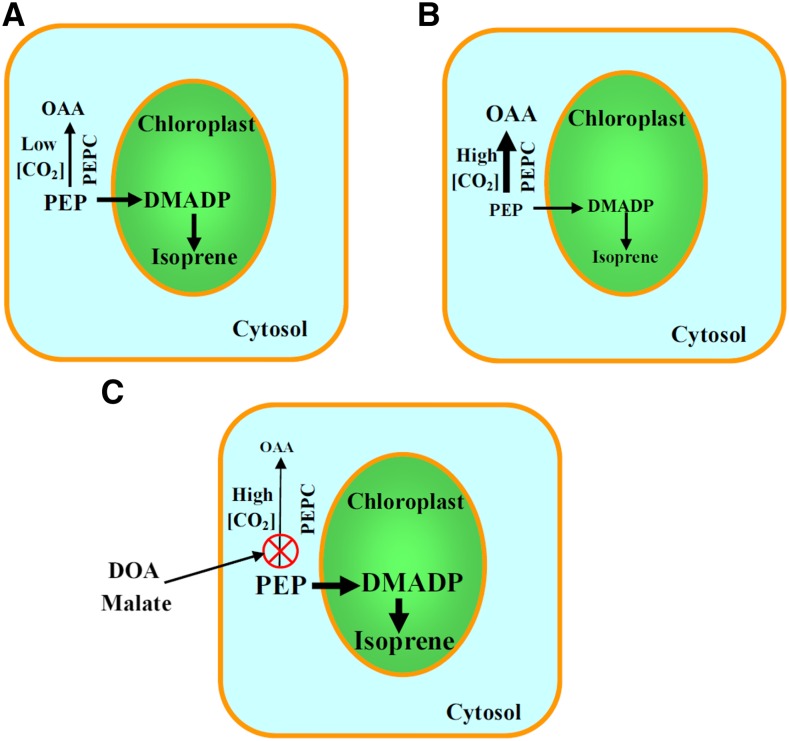Figure 1.
Isoprene emission rate decreases with increasing ambient CO2 concentration (Ca), but photosynthesis increases with increasing Ca. Illustration of the hypothesis of how high ambient CO2 might inhibit plant isoprene emission. The immediate isoprene precursor dimethylallyl diphosphate (DMADP) is synthesized in chloroplasts via the MEP/DOXP pathway that starts with the condensation of pyruvate and GAP. GAP for DMADP synthesis comes directly from photosynthesis, but it is currently still unclear what is the chloroplastic source of pyruvate. It has been suggested that pyruvate can be synthesized directly in chloroplasts (Sharkey et al., 2008; Rasulov et al., 2011), while others have postulated the necessary import of the pyruvate precursor PEP via a specific carrier into the chloroplasts (Rosenstiel et al., 2003; Wilkinson et al., 2009; Monson et al., 2012). It has further been suggested that the rate of PEP transport into chloroplasts is limited by cytosolic PEP concentration that is under the control of PEPC (Rosenstiel et al., 2003; Wilkinson et al., 2009; Monson et al., 2012). Under low Ca (A), a smaller fraction of cytosolic PEP is converted to oxalacetate (OAA), while the fraction increases under higher Ca (B), supposedly leading to a lower rate of PEP transport into the chloroplasts, curbing the rate of isoprene synthesis. If so, feeding the leaves with malate that is in equilibrium with OAA, but that also serves as an inhibitor of PEPC, or feeding with the specific PEPC inhibitor diethyl oxalacetate (DOA) should result in a greater PEP pool and, thus, abolish the effect of high CO2 concentration on isoprene emission.

